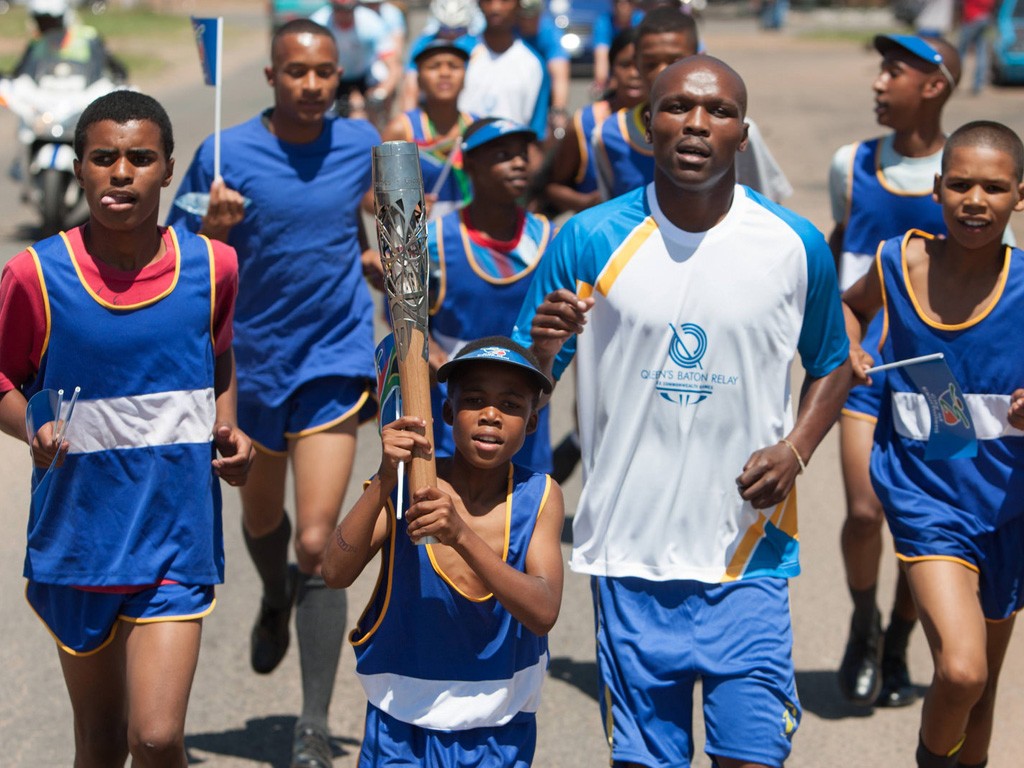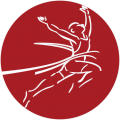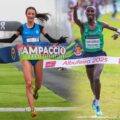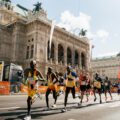The Queen’s Baton Relay tour visited all 18 African Commonwealth nations and territories some time ago, beginning in Aberdeen – Aberdeen, Sierra Leone that is! This was an exciting start, as local people danced their way into the New Year.
In Tanzania, children performed acrobatics and arranged themselves into a giant ‘G’ – the Glasgow 2014 logo!
With the Seychelles being made up of approximately 115 isles, the easiest was to travel is by water. Here, the baton went scuba diving!
In Ghana, the baton was honoured by a street carnival, and Chief Nii Kojo Ababio V spoke of when he competed in the 1947 World Student Games in Paris, representing Scotland!
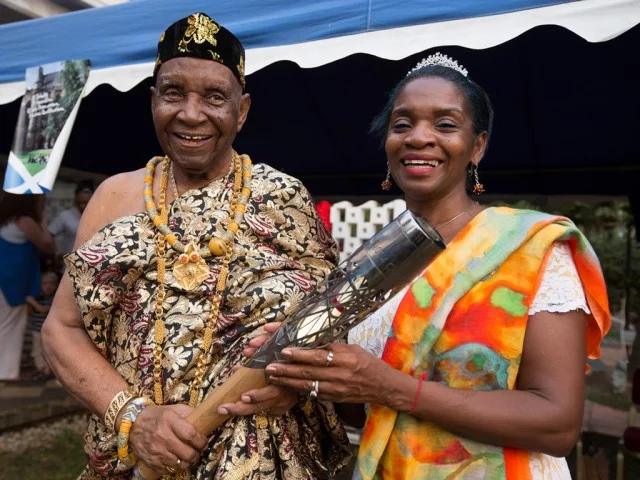
Ezekiel Cofie (93 years old), also known as Nii Kojo Ababio V, holds the Queen’s Baton with his daughter Zetta
Cofie, in Accra, Ghana, on Sunday 5 January 2014 / Glasgow 2014 OC Flickr
The baton then journeyed to Nigeria, the most populated of all African countries and home to around 160 million people. Traditional musicians and dancers created a lively and colourful welcome for the baton’s arrival on Nigerian soil.
Cameroon is often described as ‘Africa in miniature’ because of its geological and cultural diversity. Here, the baton was joined by rollerbladers, runners and cyclists as it wound through the city of Yaoundé.
In Uganda, children played tag rugby and were presented medals by legendary Kenyan runner Kip Keino.
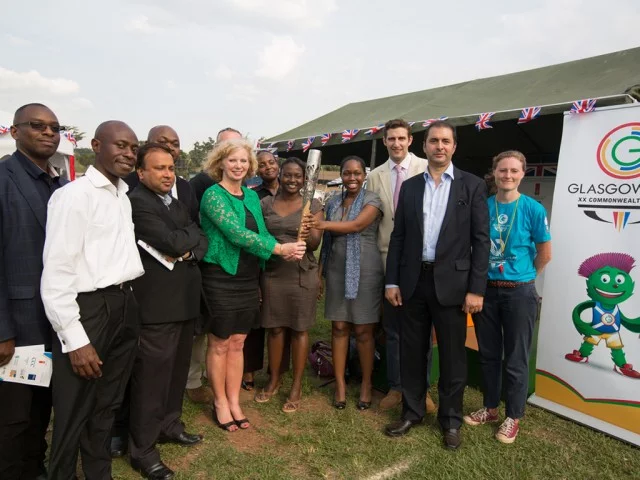
The British High Commissioner to Uganda HE Alison Blackburne and dignitaries at a sports event and reception
organised by the British High Commission, to honour the Queen’s Baton, in Kampala, Uganda, on Tuesday 14
January 2014 / Glasgow 2014 OC Flickr
The Queen’s Baton Relay then made a historic first visit to Rwanda, the youngest member of the Commonwealth. The relay spontaneously joined a group of local motorcycle taxis, which announced the arrival of the baton to excited communities with the happy sounds of horns and beeping.
The next stop in the Queen’s Baton Relay was the ‘warm heart of Africa’ – Malawi. Here, the baton was met once again by an excited Monica Dzonzi. This UNICEF Youth Ambassador was also at Buckingham Palace when the Queen’s Baton Relay was launched on 9 October, 2013.
In Zambia, the children waved saltire flags and dancers dressed as birds, dogs and monkeys for the occasion.
The welcoming ceremony in Namibia included policemen rappelling down ropes from hovering helicopters. The action never stops on the Queen’s Baton Relay!
Winning its first ever Gold medal at the Delhi 2010 Commonwealth Games, Botswana celebrated the baton with athletes past, present and future carrying it through the streets.
After a day in transit, the baton stopped to visit the people of Mauritius and recognise their sporting achievements. Mauritius has sent a team to every Commonwealth Games since gaining independence in 1986.
In Mozambique the baton was met by young students wearing UNICEF t-shirts which said ‘I have the right to play and study’. Glasgow 2014 is in partnership with UNICEF – the charity working for children in over 190 countries.
The baton crossed into Swaziland by foot. Within a few steps, it had passed from Portuguese speaking Mozambique into a country where the native tongues are English, Zulu and Swazi, demonstrating the diversity within the Commonwealth.
In Lesotho, the baton was effortlessly relayed out of the city of Maseru by marathon runners, before joining horsemen who took turns carrying the baton whilst galloping. They offered a truly incredible sight as they raced along dirt tracks and through rural villages, with beautiful landscapes and vistas all around.
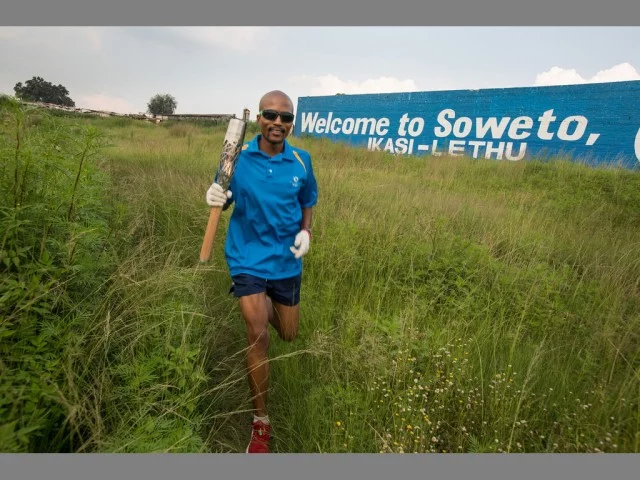
The Queen’s Baton visited Soweto, where it was carried by marathon runner Bongani Possa, Johannesburg, South Africa, on Monday 10 February 2014 / Glasgow 2014 OC Flickr
The Queen’s Baton Relay was in South Africa on the 24th anniversary of Nelson Mandela’s release from prison. Athletes, schoolchildren and the public poured out into the streets to celebrate the power and unity of sport.
It was the end of an era when the relay began its last ever sea journey to St Helena. A new airport, due to be opened in 2016, will replace this sea route through the Atlantic Ocean, marking a finish to the baton’s traditional journey from South Africa to this island.
The baton’s time in Africa has certainly been special, from celebrating Hogmanay to marking the relay’s half-way point through its epic Commonwealth journey.
[Source: Glasgow2014.com]


